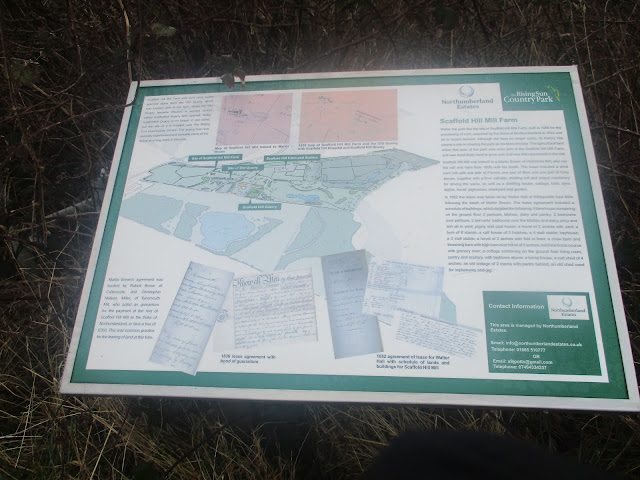The Twin Peaks of North Tyneside. January 19th
The Rising Sun Country Park has been developed on the site of an old coal mine. Four hundred acres of woodland walks, a farm and several ponds (subsidence ponds?) make it an attractive place for family outings in the middle of North Tyneside. It has a Visitor Centre and cafe (which does a grand bacon butty) and this is where seven of the Greens met for a Sunday walk on a cold grey day. The temperature never got above freezing point, not a day for hanging around.
The walk is covered by OS Explorer 316 Newcastle upon Tyne
Car park and pond. There are several ponds in the country park and several more outside.
The walk has been planned by Bria, which is a good idea. The park has a network of footpaths and trails, several marked, and different lengths. We put our trust in the leader.
Leaving the cafe/visitor centre we walked round the Swallow Pond
Swan and duck pond would be a better name.Having watched the birds for a short time, it was cold, we headed off to climb what was the pit heap. I have named it RS1 on the map. On a good day you can see for miles in all directions, even to the Stadium of Light at Sunderland as we teased the only fan of that team with us. But today the cloud was so low it was difficult to make out anything, apart from North Tyneside College. There was a small tent on the summit.
Down from the hill we walked along what was obviously an old railway line through housing at Battle Hill to the A19.
Going under the road we then walked parallel to it before heading for the Cobalt Business Park. In front of a row of shops, including a Greggs, there were some picnic tables so we paused for lunch, but not for long.There is no sharing (yet) with the Greens.
On the stretch next to the A19 dual carriageway we passed this; a whippet race track. Now you know we are in the North East but I don't think it's used anymore. Shades of Andy Capp.It's a Greggs! And it was open.
Lunch over we dutifully followed Brian round the offices (there were some markers) to the second of the peaks of North Tyneside.
RS2. A giant sundial. Unfortunately low cloud cut out distant views again but it was just possible to make out St. Mary's Lighthouse.



















.jpg)






















